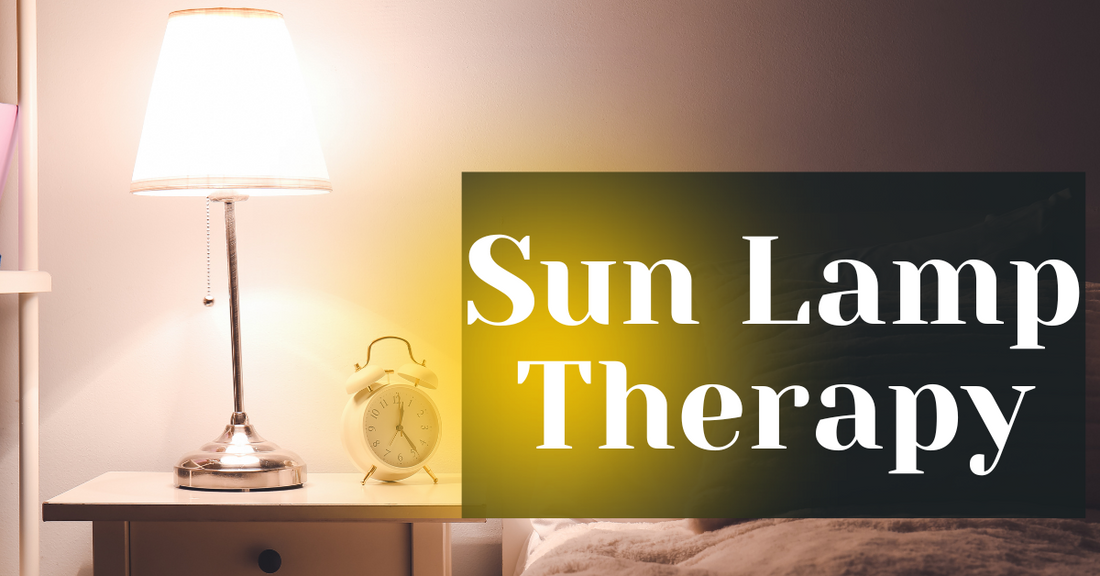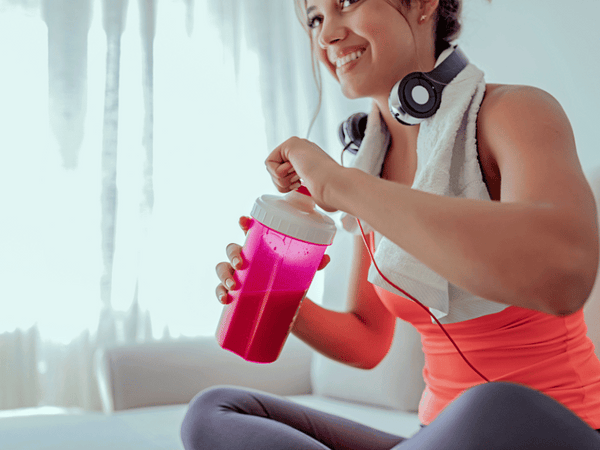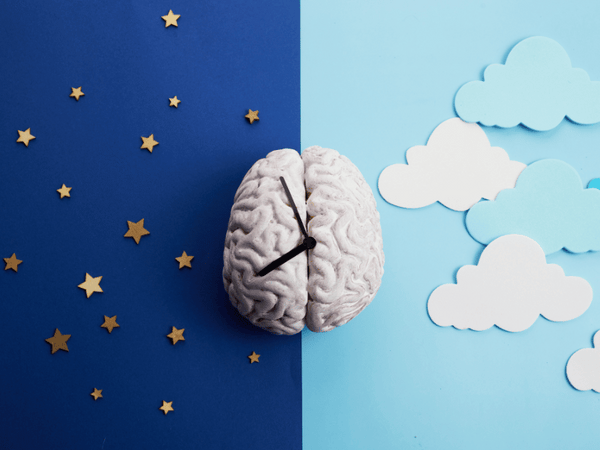
Sun Lamp Therapy
Sun lamp therapy, also known as light therapy or phototherapy, has emerged as a beacon of hope for those seeking to improve their mental and physical well-being. This therapy utilizes specialized sun lamps that emit light mimicking natural sunlight, providing numerous health benefits, especially during the darker months. In this comprehensive guide, we will delve into the intricacies of sun lamp therapy, exploring its benefits, how it works, and how you can incorporate it into your daily routine to enhance your quality of life.
What is Sun Lamp Therapy?

Sun lamp therapy is a non-invasive treatment that involves exposure to artificial light, ultraviolet light, that closely resembles natural sunlight. It is primarily used to treat seasonal affective disorder (SAD), a type of depression that occurs at the same time each year, typically in the fall and winter months. However, its applications extend beyond SAD, offering relief for various conditions such as non-seasonal depression, sleep disorders, and certain skin conditions.
Types of Sun Lamps:
-
Full-Spectrum Sun Lamps: These lamps provide a broad spectrum of light, including UV rays, and are often used for plants or reptiles. For human therapy, UV-filtered full-spectrum lamps are recommended.
-
LED Sun Lamps: Energy-efficient and long-lasting, LED sun lamps emit light that can be adjusted for intensity and color temperature, making them a popular choice for light therapy.
-
Fluorescent Sun Lamps: Commonly used in light therapy boxes, these lamps offer a wide surface area of light, which is beneficial for treating SAD.
How Sun Lamps Mimic Natural Sunlight:
Sun lamps are designed to replicate the full spectrum light show of light found in natural sunlight. They provide bright, white light that has a color temperature of around 5,000 to 10,000 Kelvin. This range more light is similar to the 10,000 lux of light you would receive on a clear, 10,000 lux of light on sunny day, which is crucial for stimulating the body's natural response to sunlight.
Benefits of Sun Lamp Therapy
Sun lamp therapy offers a plethora of benefits that extend beyond alleviating seasonal affective disorder. Here are some of the key advantages of incorporating sun lamp therapy into your routine:
Improvement in Mood and Energy Levels:

Exposure to bright light, especially in the morning, can help increase serotonin levels, leading to improved mood and higher energy levels.
Regulation of Sleep Patterns:

Sun lamp therapy can help regulate your circadian rhythm, which is your body's internal clock that dictates your sleep-wake cycle. This can be particularly beneficial for those with irregular sleep patterns or sleep disorders.
Potential Vitamin D Production:

While sun lamps used for SAD treatment do not typically emit UV light, some types of light therapy can help your skin produce vitamin D, which is essential for bone health and immune function.
Use in Treating Seasonal Affective Disorder (SAD):

Sun lamp therapy is a well-established treatment for SAD, with many individuals experiencing significant relief from symptoms such as depression, lethargy, and oversleeping.
Additional Benefits for Skin Conditions and Mental Health:

Light therapy has shown promise in treating certain skin conditions such as psoriasis and eczema. It is also being explored as a treatment for non-seasonal depression and anxiety.
How Does Sun Lamp Therapy Work?
Sun lamp therapy works by using ultraviolet rays mimicking natural sunlight, which plays a crucial role in regulating various biological processes in the body. Here's an in-depth look at the science behind sun lamp therapy:
Impact on Circadian Rhythms:
-
The body's circadian rhythm, or internal clock, is influenced by exposure to natural light. Sun lamp therapy can help reset this rhythm, particularly in individuals who experience disruptions due to irregular sleep patterns or lack of sunlight.
Effect on Neurotransmitters:
-
Exposure to bright light has been shown to generate levels of serotonin, a neurotransmitter associated with mood regulation. This can help alleviate symptoms of depression, including those related to SAD.
-
Light therapy can also influence melatonin production, a hormone that regulates sleep. By using a sun lamp at specific times, you can help normalize your sleep-wake cycle.
Regulation of Biological Processes:
-
Sunlight is essential for the synthesis of vitamin D in the skin. While sun lamps used for SAD typically filter out UV rays to prevent skin damage, some forms of light therapy can promote vitamin D production, which is important for bone health and immune function.
Choosing the Right Sun Lamp
Selecting the appropriate sun lamp is crucial for ensuring the effectiveness and safety of your light therapy sessions. Here are some factors to consider when choosing a sun lamp:
-
Light Intensity: Look for a sun lamp that provides the recommended light intensity for treating SAD, which is typically around 10,000 lux at a comfortable sitting distance.
-
Size and Coverage: Consider the size of the light-emitting surface. A larger surface area can provide a more effective and comfortable experience, as you won't need to sit as close to the lamp.
-
UV Filtering: Ensure that the sun lamp filters out harmful UV rays to protect your skin and eyes. Most reputable sun lamps designed for SAD treatment come with UV filters.
-
Color Temperature: A color temperature of around 5,000 to 6,500 Kelvin is ideal, as it closely resembles natural daylight.
-
Adjustability: Features such as adjustable brightness, angle, and height can make your light therapy sessions more comfortable and convenient.
-
Safety Certifications: Look for lamps that have been tested and certified for safety by recognized organizations.
|
Tips for Choosing a Sun Lamp:
-
Read reviews and check ratings from reputable sources.
-
Consider your budget, but don't compromise on essential features for safety and efficacy.
-
Check the warranty and customer support options provided by the manufacturer.
KOZE Day Bulb: A Popular Choice for Sun Lamp Therapy
The KOZE Day Bulb has gained popularity as an effective outdoor light, and convenient option for sun lamp and light therapy lamps. Here's a closer look at what makes the KOZE Day Bulb stand out:
Key Features:
-
Natural Spectrum Light: The KOZE Day Bulb is designed to emit light that closely mimics the spectrum of natural sunlight, providing a balanced and comfortable light experience.
-
Energy Efficiency: Utilizing LED technology, the KOZE Day Bulb is energy-efficient, reducing electricity consumption while still delivering the necessary intensity for effective therapy.
-
Ease of Use: The bulb can be screwed into any standard light fixture, making it a versatile and easy-to-integrate option for those looking to incorporate light therapy into their daily routine.
Benefits of the KOZE Day Bulb:
-
Convenience: Its compatibility with regular light fixtures allows for seamless integration into your home or office environment.
-
Cost-Effectiveness: The KOZE Day Bulb offers a more affordable alternative to traditional light therapy boxes without compromising on quality or effectiveness.
-
Longevity: LED bulbs have a longer lifespan compared to traditional bulbs, ensuring that the KOZE Day Bulb will provide consistent light therapy for an extended period.
User Experiences and Reviews:
Many users have reported positive experiences with the KOZE Day Bulb, noting improvements in mood, energy levels, and sleep patterns. Reviews often highlight the convenience and ease of use as significant advantages.
Comparison to Other Sun Lamps:
While traditional light therapy light boxes may offer a larger surface area of a light therapy box, the KOZE Day Bulb provides a more flexible and accessible light therapy and bright light therapy box box option for those looking for a simpler way to incorporate light therapy into their lives.
7 Guidelines for Sun Lamp Therapy
-
Consult with a Healthcare Professional: Before starting sun lamp therapy, consult with a doctor or mental health professional, especially if you have a history of eye or skin sensitivity, or if you're taking medication that may increase your sensitivity to light.
-
Timing and Duration: The most beneficial time to use a sun lamp is in the morning, shortly after waking up. Start with sessions of 20-30 minutes and adjust based on your response and the recommendations of your healthcare provider.
-
Proper Distance and Positioning: Position the lamp at the recommended distance, usually about 16 to 24 inches from your face, and at an angle that allows the light to reach your eyes indirectly. Avoid looking directly into the light.
-
Consistency: Use the sun lamp at the same time each day to help regulate your body's internal clock. Consistent daily use is often more effective than sporadic sessions.
-
Monitor Your Response: Pay attention to how you feel during and after the therapy. If you experience any discomfort, such as eye strain or headaches, adjust the distance or duration of your sessions.
-
Combine with Other Treatments: Sun lamp therapy can be used in conjunction with other treatments for conditions like SAD, such as cognitive-behavioral therapy or medication. Discuss the best approach with your healthcare provider.
-
Safety Precautions: If you have a condition that makes your eyes or skin particularly sensitive to light, take additional precautions, such as using a lower intensity setting or shorter sessions.
Example Schedule:
-
Week 1: 20-minute sessions at 24 inches distance, every morning
-
Week 2: Adjust duration to 30 minutes if well-tolerated
-
Week 3: Evaluate response and consult with a healthcare professional for further adjustments
Sun Lamp Therapy for Seasonal Affective Disorder (SAD)
Seasonal Affective Disorder (SAD) is a type of depression that occurs at a specific time of year, usually in the fall and winter months when there is less natural sunlight. Sun lamp therapy has become a widely recognized treatment for SAD, with many lamps offering a non-invasive and effective way to mimic sunlight to alleviate symptoms of bipolar disorder.
Understanding SAD and Its Symptoms:
-
SAD is characterized by recurrent episodes of depression that typically begin in the fall and continue into the winter months.
-
Common symptoms include persistent low mood, loss of interest in activities, increased sleep and appetite, and low energy levels.
Tips for Using Sun Lamp Therapy for SAD:
1. Start Early: Begin using the sun lamp in the winter blues early in the fall, before the onset of SAD and other symptoms.
2. Consistency is Key: Use the sun lamp daily, preferably in the morning, to maintain a regular schedule.
3. Combine with Other Treatments: In some cases, combining light therapy with other treatments like counseling or medication may provide additional benefits.
6 Other Applications of Sun Lamp Therapy
-
Non-Seasonal Depression: Research indicates that light therapy can be effective in treating non-seasonal depression, offering an alternative or adjunct treatment to traditional methods such as medication and psychotherapy.
-
Sleep Disorders: Sun lamp therapy can help regulate sleep patterns in individuals with insomnia or other sleep disorders by resetting the body's internal clock and promoting a healthy sleep-wake cycle.
-
Jet Lag and Shift Work: Exposure to bright light at specific times can help alleviate the symptoms of jet lag and assist shift workers in adjusting their circadian rhythms to match their work schedules.
-
Skin Conditions: Certain skin conditions, such as psoriasis and eczema, may benefit from light therapy. While sun lamps used for SAD typically filter out UV light, specialized lamps that emit UVB rays are used for treating skin disorders.
-
Enhancing Workplace Productivity: Incorporating sun lamp therapy in the workplace can help improve mood, energy levels, and overall productivity, especially during the darker months or in environments with limited natural light.
-
Cognitive Function: Preliminary research suggests that light therapy may have a positive impact on cognitive function, particularly in older adults or individuals with cognitive impairments.
8 Tips for Integrating Sun Lamp Therapy into Your Routine
-
Create a Consistent Schedule: Set a specific time each day for your light therapy session, preferably in the morning. Consistency is key to achieving the best results.
-
Combine with Morning Activities: Incorporate sun lamp therapy into your existing morning routine. Use the lamp while having breakfast, reading, or working at your desk to make the most of your time.
-
Gradual Exposure: Start with shorter sessions (about 10–15 minutes) and gradually increase the duration to the recommended 20–30 minutes as you become accustomed to the light.
-
Find the Right Location: Place your sun lamp in a location where you spend a significant amount of time in the morning, such as your kitchen table or home office desk. Ensure the light is directed towards your eyes, but avoid looking directly into the light source.
-
Monitor Your Response: Pay attention to how your body and mind respond to the therapy. If you experience any adverse effects, such as headaches or eye strain, adjust the distance or duration of your sessions.
-
Be Patient: It may take a few days to a few weeks to notice the full benefits of sun lamp therapy. Be patient and give your body time to adjust to the new routine.
-
Stay Hydrated: Drinking water during or after your light therapy session can help prevent dehydration, which can sometimes occur with exposure to bright light.
-
Seek Professional Advice: If you have any concerns or questions about integrating sun lamp therapy into your routine, consult with a healthcare professional for personalized guidance.
Example Routine:
-
7:00 AM: Wake up and turn on the sun lamp.
-
7:00–7:30 AM: Enjoy breakfast and a cup of coffee while sitting near the sun lamp.
-
7:30 AM: Proceed with your usual morning activities, feeling energized and refreshed.
Frequently Asked Questions About Sun Lamp Therapy
1. What is the best time of day to use a sun lamp?
The most effective time to use a sun lamp is in the morning, shortly after waking up. This helps regulate your body's internal clock and can improve mood and energy levels throughout the day.
2. How long should a sun lamp therapy session last?
Sessions typically last between 20 to 30 minutes. However, the duration can vary based on individual needs and the specific lamp being used. It's important to follow the manufacturer's instructions and consult with a healthcare professional.
3. Can sun lamp therapy replace natural sunlight?
While sun lamp therapy can mimic the effects of natural sunlight, it is not a complete replacement. It is still important to get exposure to natural sunlight whenever possible for overall health and well-being.
4. Is sun lamp therapy safe?
Sun lamp therapy is generally safe when used properly. However, it's important to use a lamp that filters out UV rays to protect your skin and eyes. If you have any specific health conditions or concerns, consult with a healthcare professional before starting therapy.
5. Can sun lamp therapy help with non-seasonal depression?
Yes, sun lamp therapy has been shown to be effective in treating non-seasonal depression in addition to seasonal affective disorder. It can be used as a standalone treatment or in conjunction with other therapies.
6. Are there any side effects of sun lamp therapy?
Some people may experience mild side effects such as eye strain, headache, or nausea. These are usually temporary and can often be alleviated by adjusting the distance or duration of the therapy sessions.
7. How do I choose the right sun lamp?
Look for a lamp that provides 10,000 lux of brightness, filters out UV rays, and has a large surface area for optimal light exposure. Consider features such as adjustable settings and ease of use based on your personal preferences.
8. Can sun lamp therapy improve sleep?
Yes, by regulating your body's circadian rhythm, sun lamp therapy can improve sleep patterns and help you achieve a more restful night's sleep.
Conclusion
Sun lamp therapy offers a ray of hope for those seeking to improve their mental and physical well-being, especially during the darker months of the year. By mimicking natural sunlight, sun lamps can help regulate circadian rhythms, boost mood, and enhance overall quality of life. Whether you're struggling with seasonal affective disorder, non-seasonal depression, or simply looking for a way to brighten your days, sun lamp therapy is a safe and effective option to consider.
Call to Action
If you've been either feeling depressed by the effects of limited enough sunlight exposure or want to explore a natural approach to enhancing your well-being, consider giving sun lamp therapy a try. Remember to consult with a healthcare professional before starting, and choose a high-quality sun lamp that meets your needs. Share your experiences with sun lamp therapy in the comments below or on social media to help others discover the benefits of this illuminating light treatment too.
Reference:
1. Golden, R. N., Gaynes, B. N., Ekstrom, R. D., Hamer, R. M., Jacobsen, F. M., Suppes, T., ... & Nemeroff, C. B. (2005). The efficacy of light therapy in the treatment of mood disorders: A review and meta-analysis of the evidence. American Journal of Psychiatry, 162(4), 656-662. https://ajp.psychiatryonline.org/doi/full/10.1176/appi.ajp.162.4.656
2. Lam, R. W., Levitt, A. J., Levitan, R. D., Enns, M. W., Morehouse, R., Michalak, E. E., & Tam, E. M. (2006). The Can-SAD study: A randomized controlled trial of the effectiveness of light therapy and fluoxetine in patients with winter seasonal affective disorder. American Journal of Psychiatry, 163(5), 805-812. https://ajp.psychiatryonline.org/doi/full/10.1176/ajp.2006.163.5.805
3. Pail, G., Huf, W., Pjrek, E., Winkler, D., Willeit, M., Praschak-Rieder, N., & Kasper, S. (2011). Bright-light therapy in the treatment of mood disorders. Neuropsychobiology, 64(3), 152-162. https://www.karger.com/Article/Abstract/328950
4. Wirz-Justice, A., Benedetti, F., & Terman, M. (2009). Chronotherapeutics for Affective Disorders: A Clinician's Manual for Light and Wake Therapy. Basel, Switzerland: Karger. https://www.karger.com/Book/Home/239049
5. Terman, M., & Terman, J. S. (2005). Light therapy for seasonal and nonseasonal depression: efficacy, protocol, safety, and side effects. CNS Spectrums, 10(8), 647-663. https://www.cambridge.org/core/journals/cns-spectrums/article/light-therapy-for-seasonal-and-nonseasonal-depression-efficacy-protocol-safety-and-side-effects/3FC8F8AFD15A9C8D5EAFFEA1DEAF3CC3

